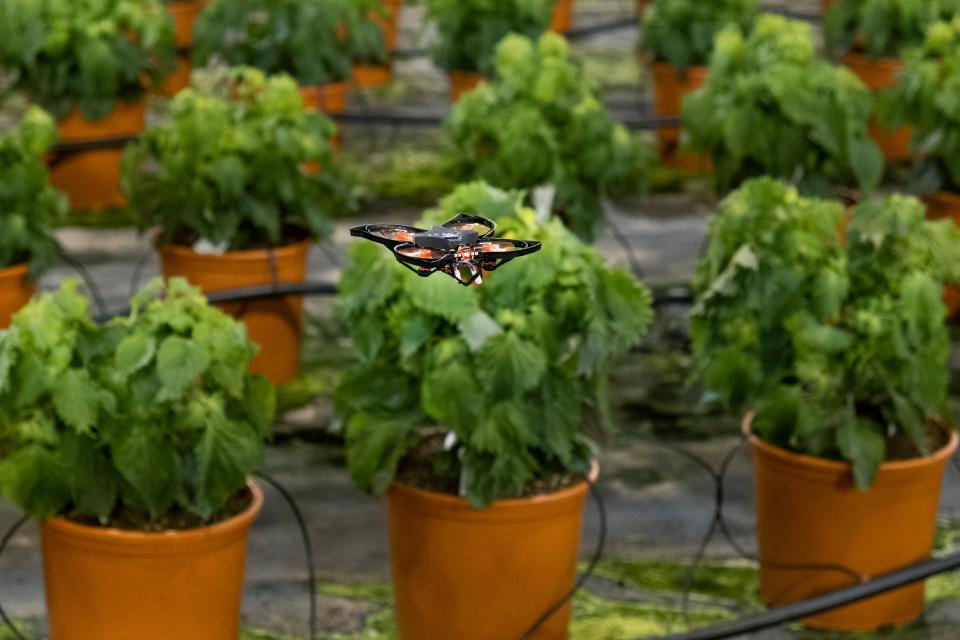Drones v moths: Dutch startup uses bat-like drones to protect crops

Hand-sized, bat-like drones are being used by a Dutch cress grower to police the skies of his greenhouses.
Moths are a major cause of crop losses in greenhouses. Once they enter, they are in heaven. There are no predators inside and so moths are free to thrive and produce caterpillars that feed on the crops.
“I have unique products where you don’t get certification to spray chemicals and I don’t want it,” Rob Baan, a Dutch cress grower, told the Associated Press. His company, Koppert Cress, exports aromatic seedlings, plants and flowers to top-end restaurants around the world.
But PATS Indoor Drone Solutions have provided part of the answer with an artificial predator: rapid moth-intercepting drones.
Whenever a moth takes to the air, special air-space monitoring cameras will locate them and send a nearby, autonomous drone to fly into the moth, instantly destroying the pest midair, sustaining the ecological balance.
The drones play an important part in Baan’s greenhouse ecosystem and is just one part of his crop protection regime including bugs, pheromone traps and bumblebees.
“You don’t want to kill a ladybug, because a ladybug is very helpful against aphids,” he said. “So they should kill the bad ones, not the good ones. And the good ones are sometimes very expensive — I pay at least 50 cents for one bumblebee, so I don’t want them to kill my bumblebees.”
“It’s still a development product, but we ... have very good results.” said PATS CEO Bram Tijmons. “We are targeting moths and we are taking out moths every night in an autonomous way without human intervention. I think that’s a good step forward.”
The drone startup acknowledges that the system still needs refining and believes that currently too many drones are required, he envisions that the future will require less. But right now, the drone predator is the flying hero greenhouse crops need for sustainable insect control.
Read More
Poison-laden attack drones are latest tool in Australia’s fight against plagues of invasive mice

 Yahoo Finance
Yahoo Finance 